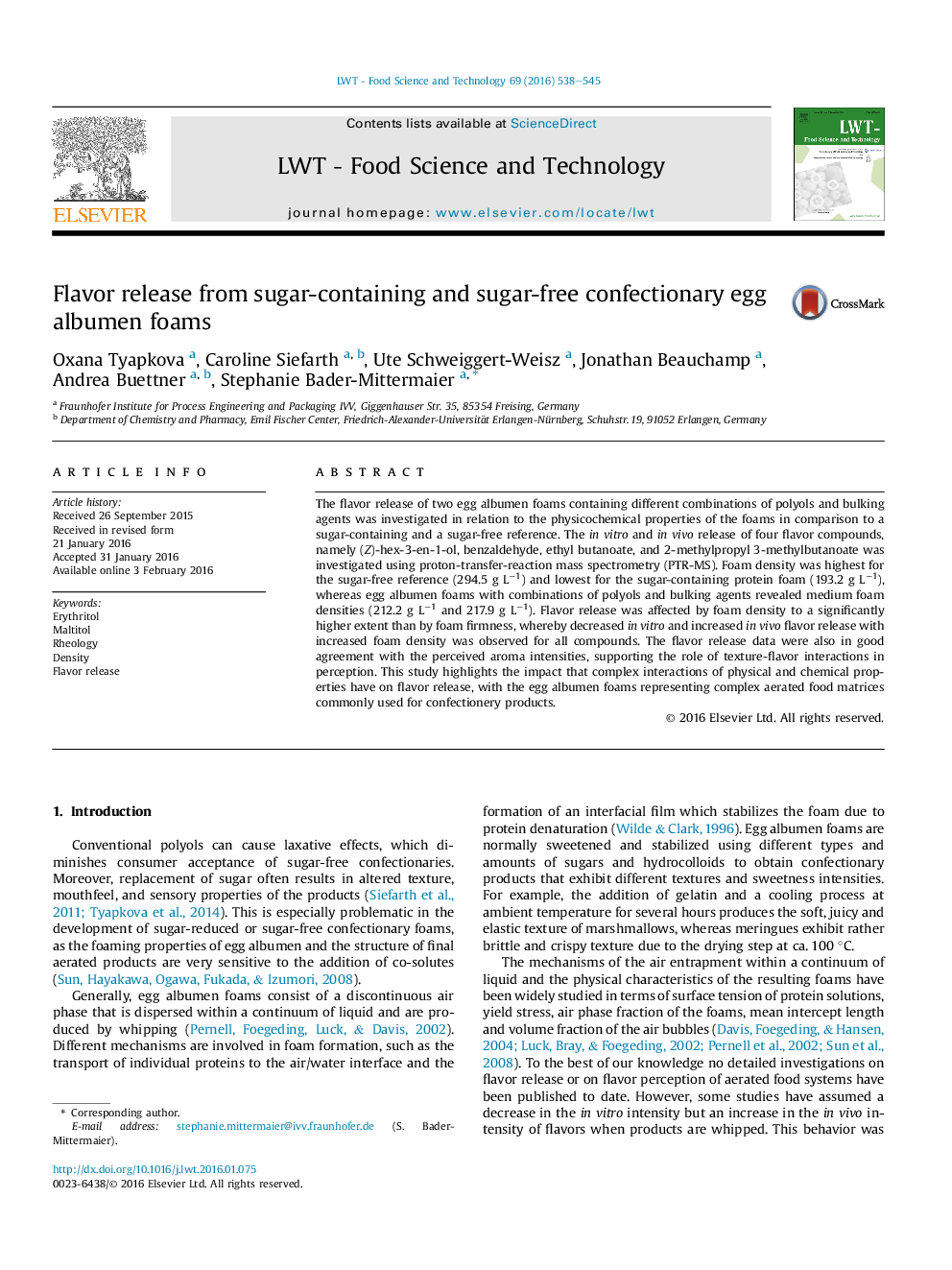| Article ID | Journal | Published Year | Pages | File Type |
|---|---|---|---|---|
| 4563779 | LWT - Food Science and Technology | 2016 | 8 Pages |
•Characterization of sugar-free confectionary foams with alternative sweeteners.•Foam density depending on physico-chemical properties of sweeteners and bulking agents.•Decreased in vitro and increased in vivo release with increased foam density.•Release dependence on hydrophobicity and volatility of flavors in the foam matrix.•Correlation of flavor release and flavor perception.
The flavor release of two egg albumen foams containing different combinations of polyols and bulking agents was investigated in relation to the physicochemical properties of the foams in comparison to a sugar-containing and a sugar-free reference. The in vitro and in vivo release of four flavor compounds, namely (Z)-hex-3-en-1-ol, benzaldehyde, ethyl butanoate, and 2-methylpropyl 3-methylbutanoate was investigated using proton-transfer-reaction mass spectrometry (PTR-MS). Foam density was highest for the sugar-free reference (294.5 g L−1) and lowest for the sugar-containing protein foam (193.2 g L−1), whereas egg albumen foams with combinations of polyols and bulking agents revealed medium foam densities (212.2 g L−1 and 217.9 g L−1). Flavor release was affected by foam density to a significantly higher extent than by foam firmness, whereby decreased in vitro and increased in vivo flavor release with increased foam density was observed for all compounds. The flavor release data were also in good agreement with the perceived aroma intensities, supporting the role of texture-flavor interactions in perception. This study highlights the impact that complex interactions of physical and chemical properties have on flavor release, with the egg albumen foams representing complex aerated food matrices commonly used for confectionery products.
